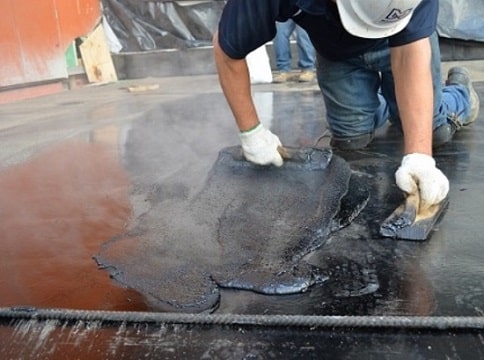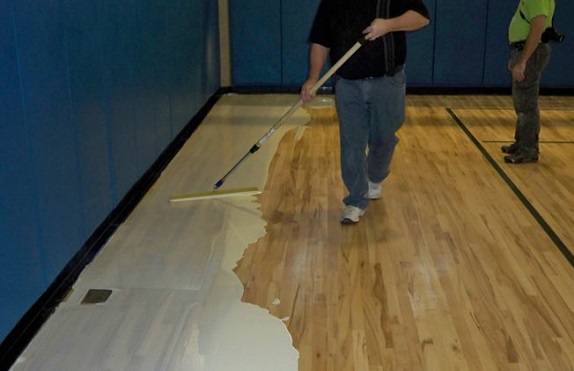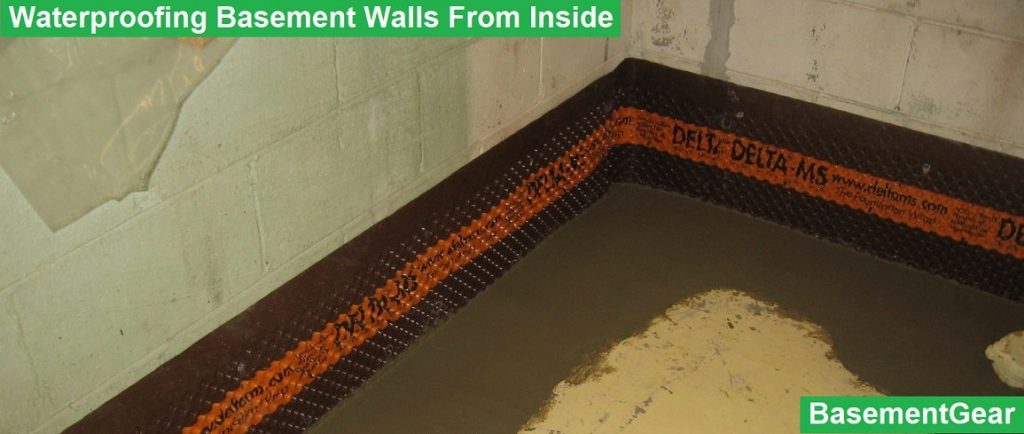A basement is an essential structure at home. It can be used to hold lots of things, such as laundry machines, entertainment centers, and holiday decor. But, if there is something you don’t need in your basement, its standing water.
When you don’t waterproof the inside walls of the basement, water can find a number of ways to seep inside your home. The water will them wreak havoc on your belongings and structure itself. It is, therefore, necessary to learn how you can stop excess basement moisture and stop also seeping through the cracks. So, you can utilize the various different methods for waterproofing the basement wall. It will help to prevent water damages that can enter your basement.
You may like
- How to Build a Home Gym in Basement
- How to Choose Fireplace for Basement
- How to Choose Carpet For Basement
- How to Choose Dehumidifier For Basement
- How to Choose Lights for Your Basement
- How to Clean Your House Basement
- Remove Moisture from Basement
How To Waterproofing Basement Walls From Inside
Waterproofing basement walls from inside may be the best option to prevent health problems. It depends on various factors. For example, if you can’t address the exterior side because of no access or confined space.
It’s also encouraged to waterproof from inside if the water problem you’re facing doesn’t have anything to do with foundation leak and might be a hydrostatic pressure problem.
With an internal system of waterproofing, its cost-effective solution especially to unfinished living areas. If you are experiencing moisture problem in your basement, here are tips on how you can waterproof the basement wall:
Cementitious Waterproof Method
If you are experiencing a wet basement, the cementitious waterproof method is essential to use. First, you should consider that water is seeping through your walls. If so, this interior method for waterproofing will be effective.

In construction and Do It Yourself, this is also the easiest method you can do to waterproof the basement wall. Besides, the materials you need for this method are locally available. You need to check at the nearest store that supplies masonry products. Mixing and applying to waterproof the wall is also easy.
This method is also effective to use on other internal wet areas. It’s also a rigid and flexible method because it’s not exposed to weathering and sunlight. So, the process won’t go through any contraction or expansion process.
Besides use on the basement inside walls, the method is also effective on toilet walls, dams, sewage treatment plants, water treatment plants, bridges, and others.
If you find that your basement is wetting inside because of moisture seeping through the walls, cementitious waterproof is an excellent method to consider. It’s among the best method to make your basement moisture level to drop.
Liquid Waterproofing Membrane Method
This is another proven method to waterproof your basement walls. It won’t allow any more water to seep inside the basement as damp conditions are health hazards.

For this method, a liquid waterproofing membrane is a process where you add a thin coating on your basement walls. The coat is usually consisting of primer, and then you add the other two coats on top of your primer coat.
When you are adding the coats on your wall, you can use a trowel, roller, or spray. This method is also more flexible than the other types of waterproofing walls, such as cementitious.
The liquid will, therefore, help to cure the rubbery coating on your wall. This will make the elongation properties of the coat to rise and reach up to 280 percent.
You also need to choose a durable coating material. The durability of this waterproofing coat will depend on the type of polymer that your manufacturer uses to make your liquid waterproofing.
If the liquid waterproofing membrane comes with polymer-modified asphalt, you can spray it on the walls of the basement. For polyurethane liquid membrane, it comes in different grades for spray, roller, or trowel. There are also various manufacturers for liquid waterproofing membrane. You can, therefore, check from a reliable manufacturer.
Bituminous Coating Waterproofing Method
This is another method essential in waterproofing the walls of the basement to prevent water seeping through the cracks. Bituminous coating is, therefore, a coating type that is used to waterproof and gives you a flexible protective cost.
The flexibility of Bituminous coating waterproofing depends on polymerization and formulation grade. The reinforcement of the fiber also influences the flexibility and protection of this material.

This type of coating is also referred to as asphalt coating. If you need to use this bituminous coating, its favorable to those areas that are wet. The coating is also excellent in protecting concrete surfaces of the basement.
The materials used to make this bituminous coating are bitumen based materials. So, it is preferred to be used inside the basement because it is not suitable when exposed to sunlight.
If the material is exposed to the sunlight, it will become brittle and fragile unless it has been modified using flexible materials such as acrylic or polyurethane-based polymers.
For the flexibility of this coating, it will depend on solid content. So, that is about the polymer that has been added into the bitumen.
Polyurethane Liquid Membrane Waterproofing
This is another efficient method that you can use to waterproof your basement. It’s an expensive method because of its resistance to weathering.

This method, polyurethane liquid membrane, offers you high flexibility. With the use of polyurethane, it is efficient but sensitive to the moisture content available in your basement. So, before you can use polyurethane, you need to be careful when evaluating the moisture content available on the concrete walls. If you don’t, after some time, de-bonding or peeling of the membranes might happen.
Acrylic Waterproofing paint
The other method you can use to waterproof the walls of the basement is the use of acrylic waterproof paint. This is not different from the ordinary wall paint you use.
If you are using this paint to act as a waterproof, you have to brush, roll, or spray with it to form a thick layer. For example, a gallon of this paint should cover 75 Square feet. If you are not waterproofing, the same gallon is supposed to cover 300 Square feet.
This method is essential for DIY applications at home. You can apply this coating paint over the painted surfaces. After its cured, paint once more to form the desired coat thickness.
Plastic Sheets and Panels
The most suitable way to waterproof your leaking walls is the use of plastic sheets and panels. If this combination will be mixed with an interior basement drainage system, it creates a waterproof basement wall. So, it will prevent water from entering the basement through the wall. Besides, it also prevents it from getting ruined. A plastic is an effective waterproof agent. If it is applied as panels, your basement walls will remain dry.
There are other essential factors that you should address to ensure the gaps and cracks in the basement wall where the leakage is taking place have been prevented. With this, you might need professional assistance to solve your problem. You will also get a new look at your home.
Silicate Based Concrete Sealers
This silicate-based concrete sealer can also be called densifiers. If you have not painted or sealed your basement wall, this is what you need.
When you use these sealers, they absorb and react chemically with ingredients in the bricks and concrete of your basement wall. The reaction results in an extremely hard waterproof surface, and penetration will be difficult.
Professionally, if your wall has a crack, the sealer will fill and seal it permanently and ensure it never reopens.
If you want to DIY, start the repair by cleaning the wall crack thoroughly using a wire brush. It will help to remove debris and aggregates.
Once you see that the crack is clean, you can know to inject plastics at the crack. If ready, then apply your sealer coat so that it can cover and hold your plastics.
The crack will dry itself, and it will be permanently sealed. This is, therefore, an effective method to waterproof your basement wall.
Basement Waterproofing FAQ
What indicators should make me fix my basement?
There are obvious signs of the puddle you will see on the floor. The other indicators include water trickling from the wall, musty odors, presence of allergens, damp spots, and more.
Why is it necessary for me to waterproof my basement?
If you need to utilize the basement space to act as a living area, extra bedroom or storage space will force you to waterproof the basement.
What causes a basement leak?
There are several reasons behind your basement leak. Some of the causes may be lack of drain tile or when it is clogged. Sometimes, the parking deteriorates, and water is allowed to enter the foundation.
Conclusion
If it is about protecting your home against damages caused by water, waterproofing is an essential piece of the puzzle. However, after using the best DIY efforts, and your basement ends up getting more moisture inside, make a plan of action. This is essential because you should ensure your belongings are safe and the people living there. In such a condition, you should call a professional to help you waterproof the basement. You also need to learn what you should do and what you should not do in such critical issues.

